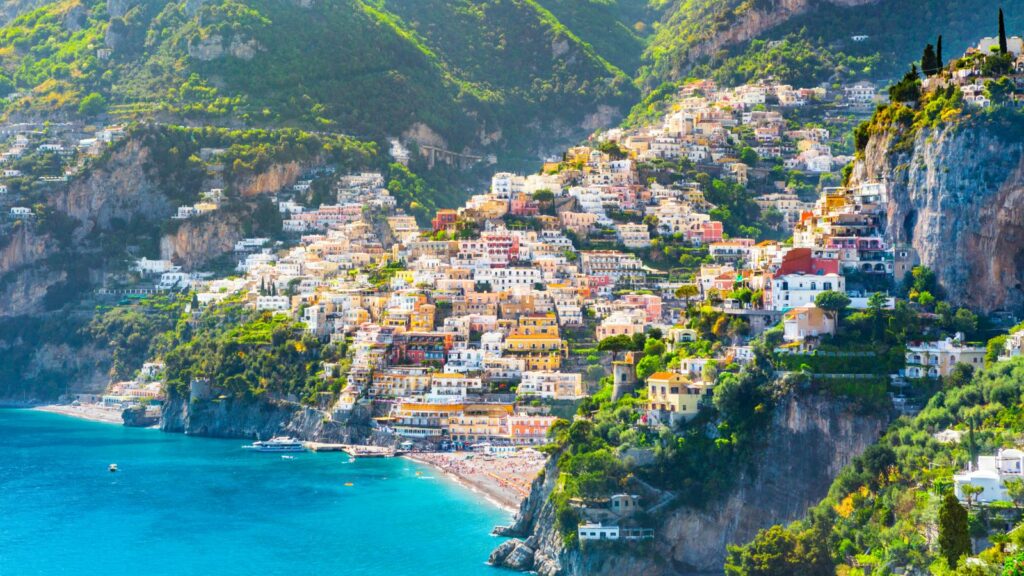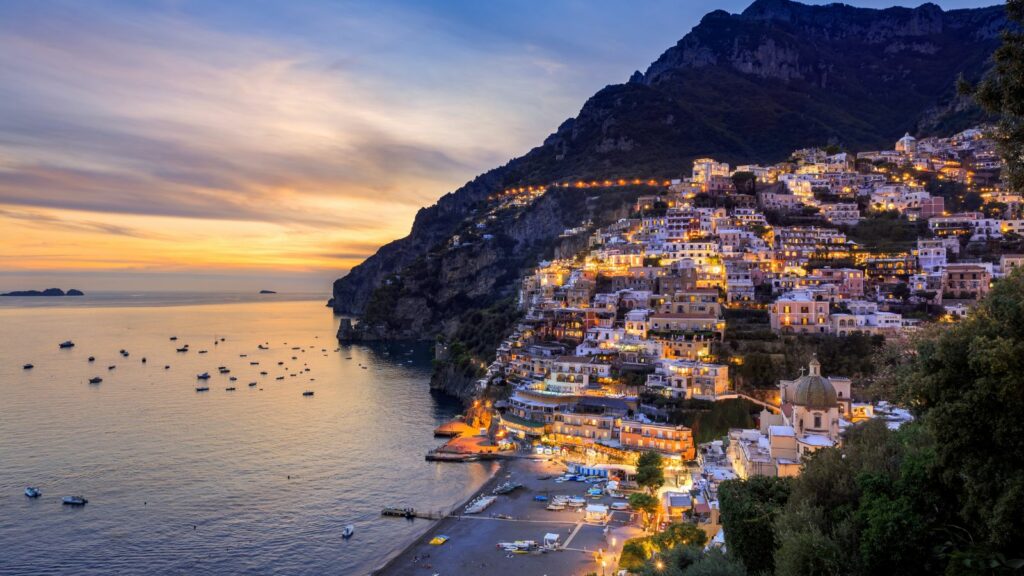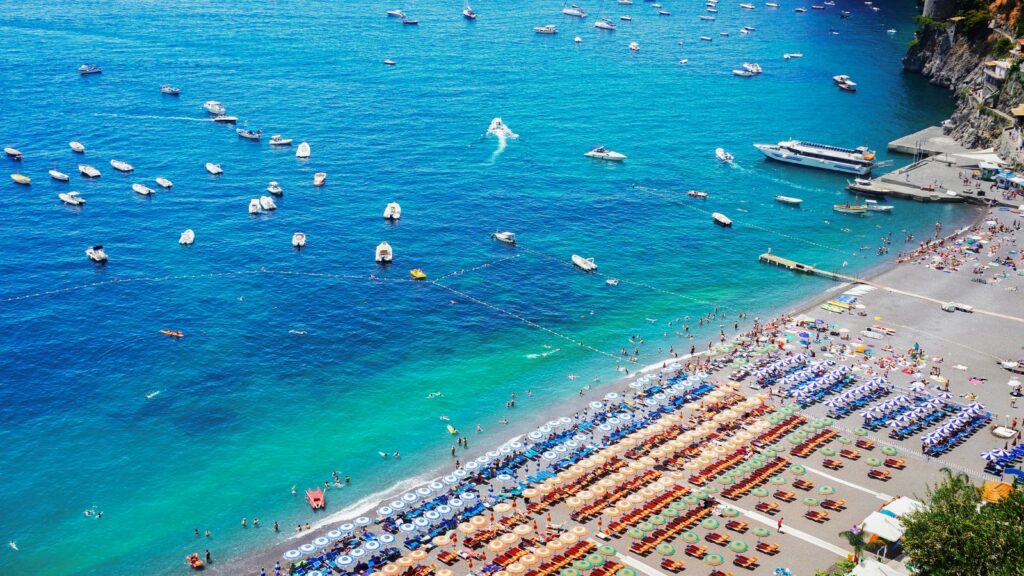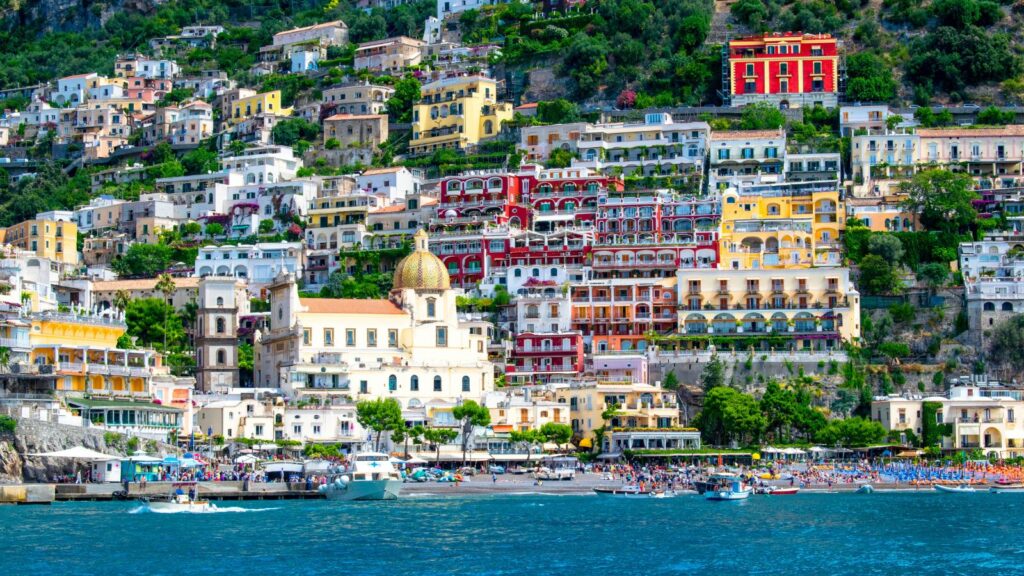Nestled on Italy’s sun-drenched Amalfi Coast, Positano is a destination that’s enough to make any traveler’s heart skip a beat. But navigating this picturesque town, with its steep streets and winding paths, can be a bit of a challenge. That’s where a detailed Positano map comes in handy.
This guide will help you unravel the labyrinth of Positano’s narrow lanes and hidden alleys. Whether you’re searching for the best beach spots, local eateries, or breathtaking viewpoints, a comprehensive map is your key to unlocking the town’s secrets.
Positano Map
The map of Positano is more than a navigational aid, it is an insightful tool to fully experience the magic of the seaside town. It unlocks the secrets of the Amalfi Coast gem, revealing the layers of its charm. Keep reading to understand the segments of the Positano map and to get tips for smooth navigation.

The Positano map is a vibrant ensemble of critical areas. It paints a vivid picture of the town’s landscape, traversing from Spiaggia Grande – the main beach, to the networks of shopping streets crammed with local artisanal wares.
- Spiaggia Grande: Positano’s main beach area. Adjacent to it lies the quintessential postcard view of colourful houses piled closely on the steep hillside.
- Fornillo: Another, more secluded beach, perfect for those seeking tranquility amidst natural beauty.
- Via dei Mulini & Via Pasitea – Shopping streets humming with local restaurants, boutiques, and art galleries, playing host to Positano’s vibrant retail scene.
- Santa Maria Assunta: Famous for its characteristic majolica dome, this church stands out even in Positano’s clustered kingdom of buildings.
- Montepertuso & Nocelle: These are located on the mountains above Positano offering breathtaking panoramas of the town and the sprawling blue sea.
Types of Positano Maps
Post the introductory immersion into the charm of Positano and its maps, the article now explores the different types of maps tourists can use to plan their adventure. This section sheds light on two principal categories, printed maps and digital maps. Each comes with its own set of advantages, catering to varying preferences and needs.

Printed maps, the traditional choice, offer several benefits for travelers. Holding a physical representation of the town brings a feeling of reliability. These maps, bought in Parafarmacia Positano along Piazza dei Mulini or other local shops, lay out Positano’s key points of interest. They detail locations of Spiaggia Grande, Fornillo, the shopping streets, Santa Maria Assunta church, Montepertuso, and Nocelle.
However, a caveat with printed maps is their lack of dynamic updates. Certain roads and pathways of Positano may alter due to construction or seasonal changes. The traveler must inquire with locals or tourism offices for these details.
Digital maps, on the other hand, are the modern-day equivalent for navigation. They offer real-time updates and provide various features that enhance the travel experience. Applications like Google Maps or Apple Maps assist tourists on their phones or tablets directly. The live tracking tool pinpoints the user’s location, assisting them in venturing through the town’s stairs and winding routes.
Benefits of Using a Positano Map
Understanding the benefits of using a Positano map can enrich a visitor’s experience in this picturesque Italian town. From efficient travel planning to helping uncover the location’s hidden gems, a Positano map offers various advantages. Let’s delve into these aspects in more detail.

A Positano map enables travelers to plan their trips effectively. It provides an overview of the city layout, including the intricate network of narrow streets, steep steps, and the locations of key tourist attractions like Church of Santa Maria Assunta or Fornillo Beach. Charts detail chosen paths to these attractions, offering estimated travel times based on various transport modes, whether it’s by foot, bus, or taxi.
Positano is known for more than just its popular attractions. It’s dotted with lesser-known but equally captivating spots that highlight the local culture – spots that can be discovered with the help of a Positano map. Maps often include annotations for non-touristy areas of interest like quaint local cafés, secluded beaches, or uncommon viewpoints that offer stunning vistas of the city and coastline.

